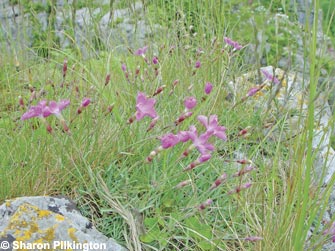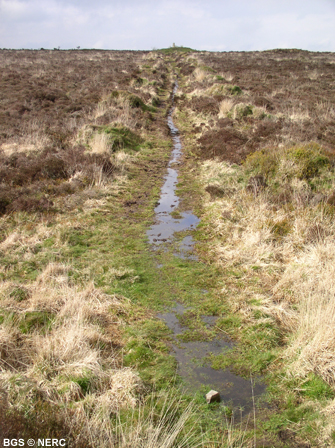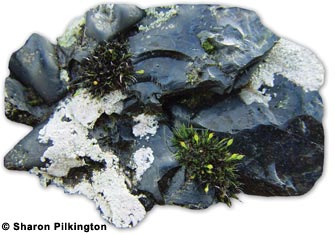
Geology and biodiversity

Limestone cliffs and crags are natural rock gardens, with lime-loving plants rooted in cracks and tiny pockets of soil. In addition to the species found in the limestone grassland, the rock outcrops also support a number of rarities, such as Cheddar Pink (Dianthus gratianopolitanus), and Slender Bedstraw (Galium pumilum).
At the other end of the soil spectrum, well-drained brown or red podzolic soils derived from the underlying Devonian sandstone support acid dwarf shrub heath, acid grassland, bracken and gorse scrub. These soils are nutrient-poor and free-draining, and typically very acidic, so a different set of soil nutrients is rendered unavailable to plants. Many species that are typical of heathland are adapted to very dry conditions, for example, heathers possess tiny, or needle-like leaves, and are capable of making their own nitrogen through fungal partners in their roots.


More extreme pressure is exerted on vegetation when the soils contain high levels of toxins. Around many of the old lead and zinc mine workings, the soils contain high levels of lead, cadmium and especially zinc, that are toxic to most plants. In addition, these areas tend to be very drought-prone in summer, and hold few nutrients. Only a few, very stress-tolerant species are able to withstand such hostile conditions, and as a result these often very local sites support a highly distinctive flora. Early colonisers of such sites can accumulate remarkably high concentrations of zinc without harm.
- Home
- Overview maps
- Locality
areas
- Cheddar Gorge
- Charterhouse
- Blackdown
- Burrington Combe
- Shipham & Rowberrow
- Crook Peak & Axbridge
- Banwell to Churchill
- Priddy
- Harptree & Smitham Hill
- Draycott & Westbury-sub-Mendip
- Wookey Hole & Ebbor Gorge
- Wells
- Great Elm & Vallis Vale
- Mells & the Wadbury Valley
- The Vobster area
- The Whatley area
- Torr Works & Asham Wood
- Beacon Hill
- Stoke St Michael & Oakhill
- Holwell & Nunney
- Shepton Mallet & Maesbury
- Gurney Slade & Emborough
- The Nettlebridge valley
- Geology
- Minerals and mines
- Quarrying
- Caves and karst
- Biodiversity
- Detailed site information
- Acknowledgements
- External links
- Search
- Site map